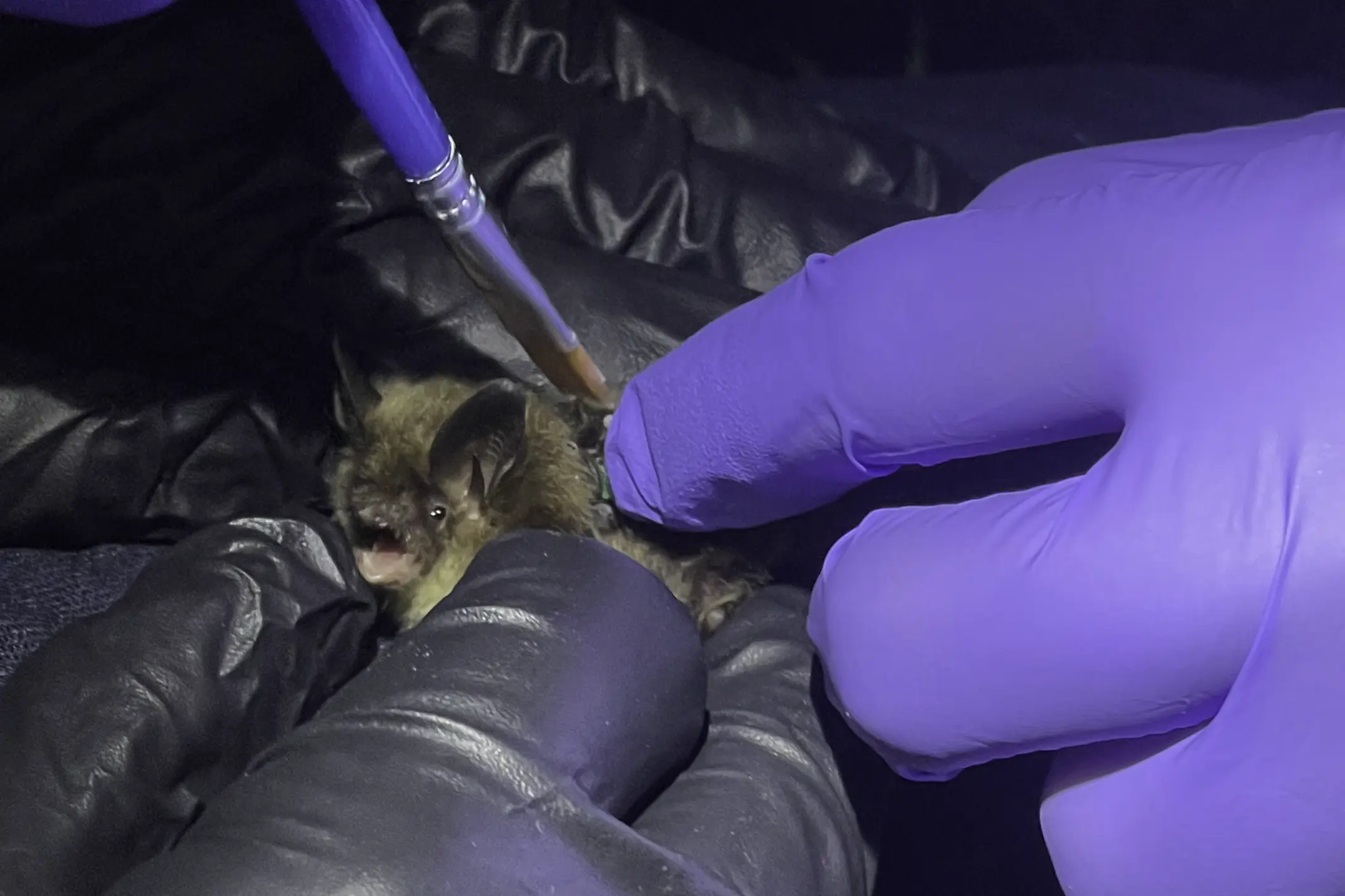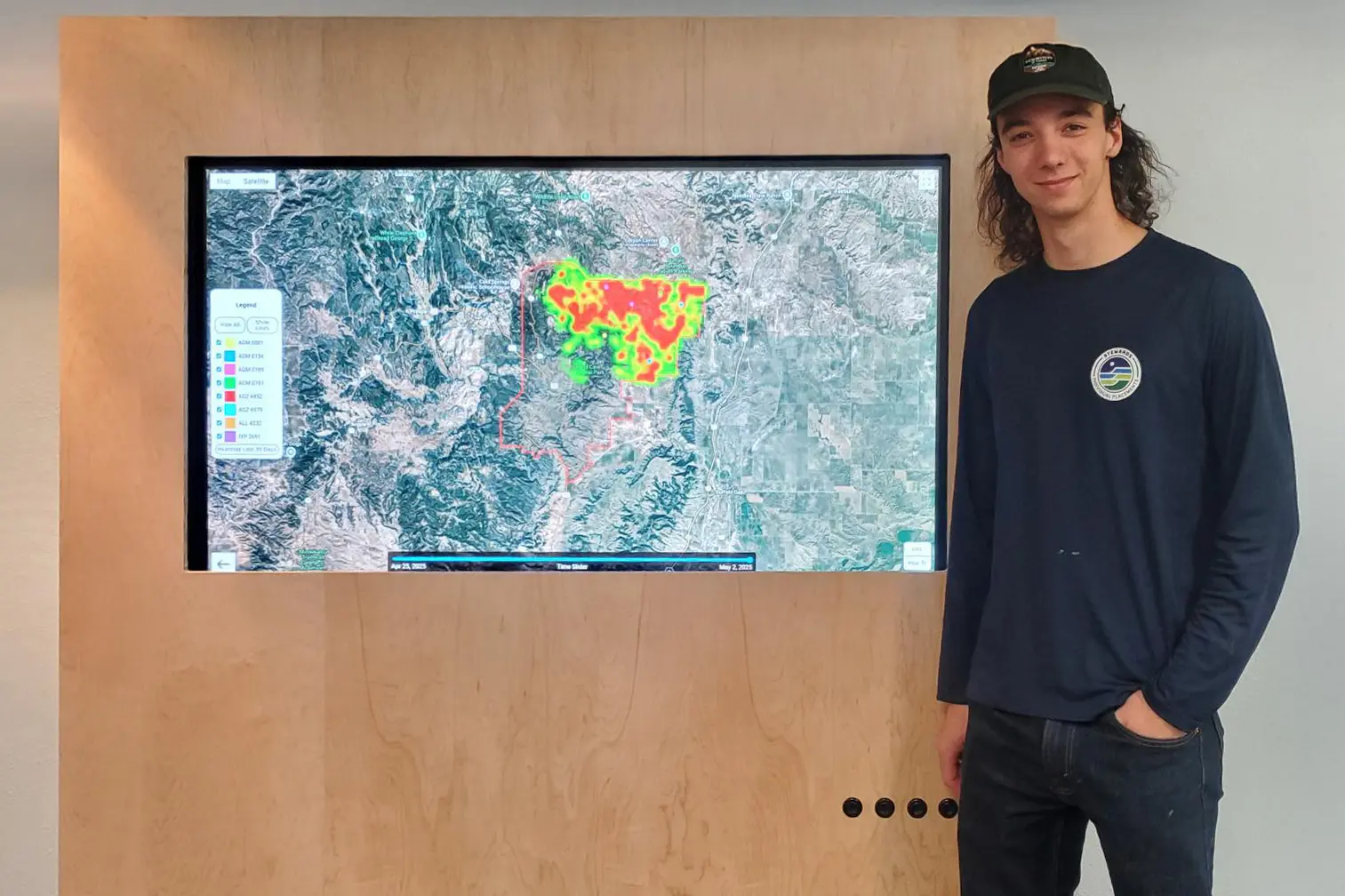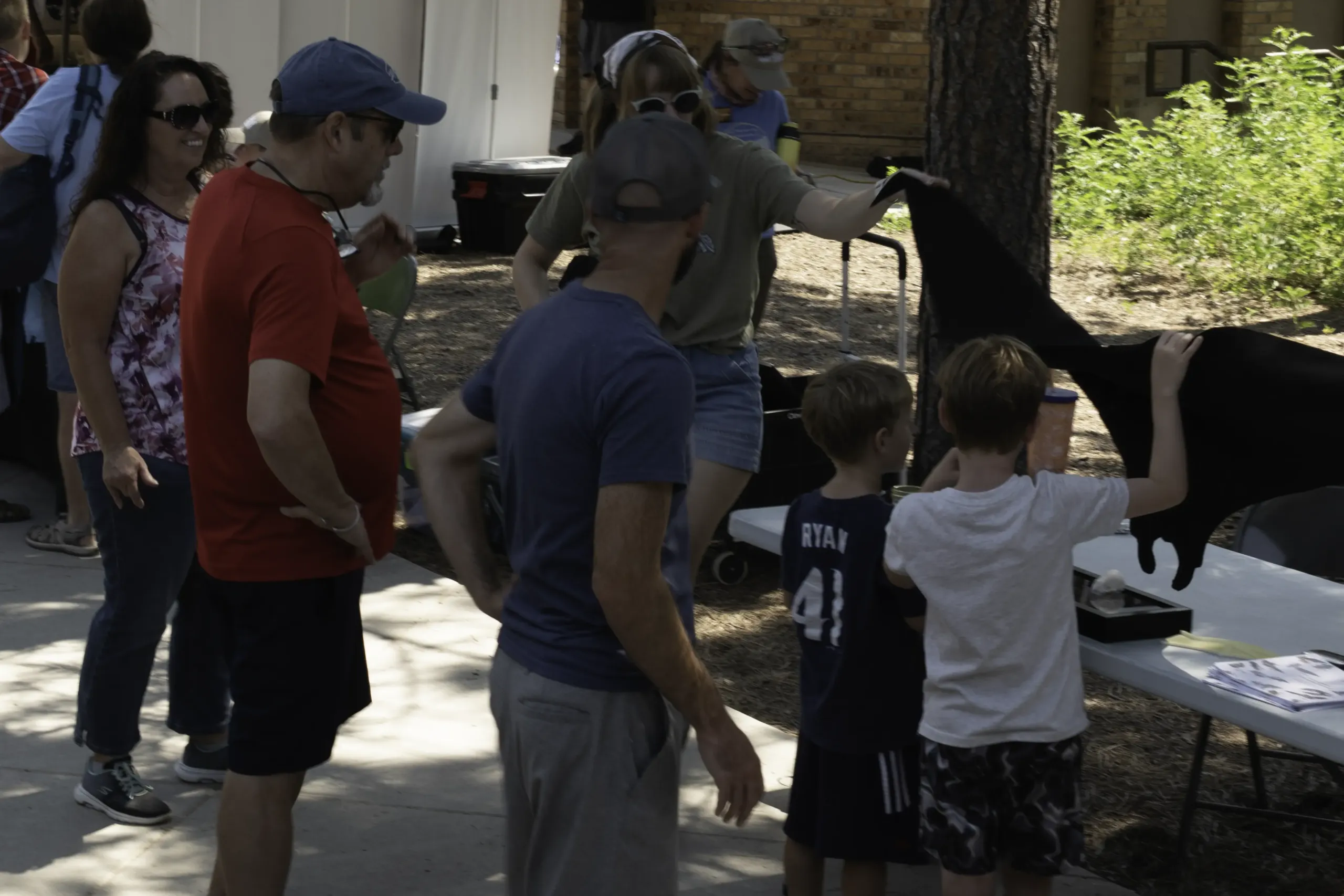
Adopt a Bat: Tracking Hope in the Black Hills
Every blip on a tracker could help keep an endangered species from disappearing.
Northern long-eared bats once filled forests across the eastern and central U.S. Today, white-nose syndrome has pushed them to the brink. The fungus wakes bats during hibernation, draining their fat reserves and leaving them too weak to survive the winter. Millions have already been lost.
This summer, the U.S. Forest Service – Black Hills National Forest and South Dakota State University teamed up to chart a new path forward. Researchers are locating summer roosting sites and preparing to vaccinate wild bats against the fungus—one of the first real chances at recovery.
A bat the mass of a quarter.
A dime-sized tracker.
A shot at saving a species.
BHPFA is proud to support this work by funding radio transmitters, made possible through your donations to the Adopt-A-Bat program. Each tiny signal helps researchers discover where these bats rest and how to protect them.
“Even a bat weighing less than a US quarter deserves a shot at survival.”
Your support keeps this work alive. Learn how you can adopt a bat and fund conservation at blackhillsparks.org.
Share this article
Follow us
More from the Wonder & Exploration Quarterly
December 29, 2025
December 29, 2025
December 29, 2025




